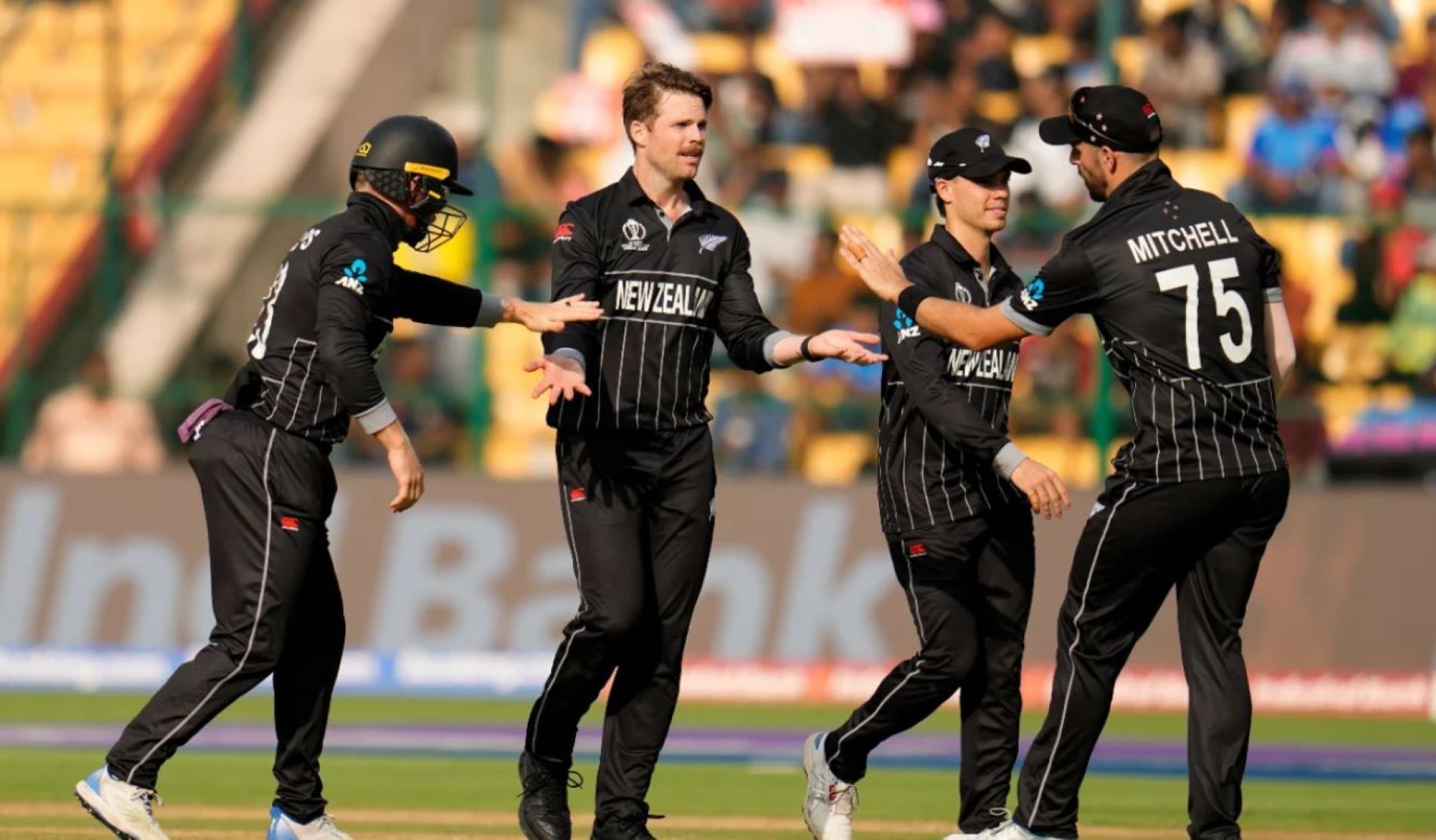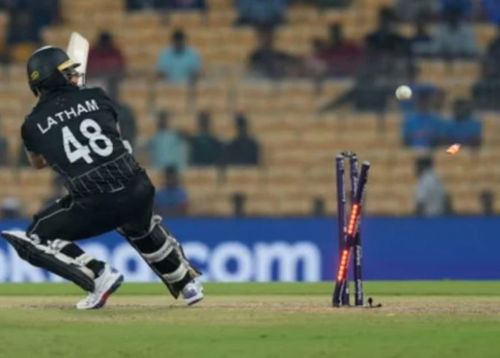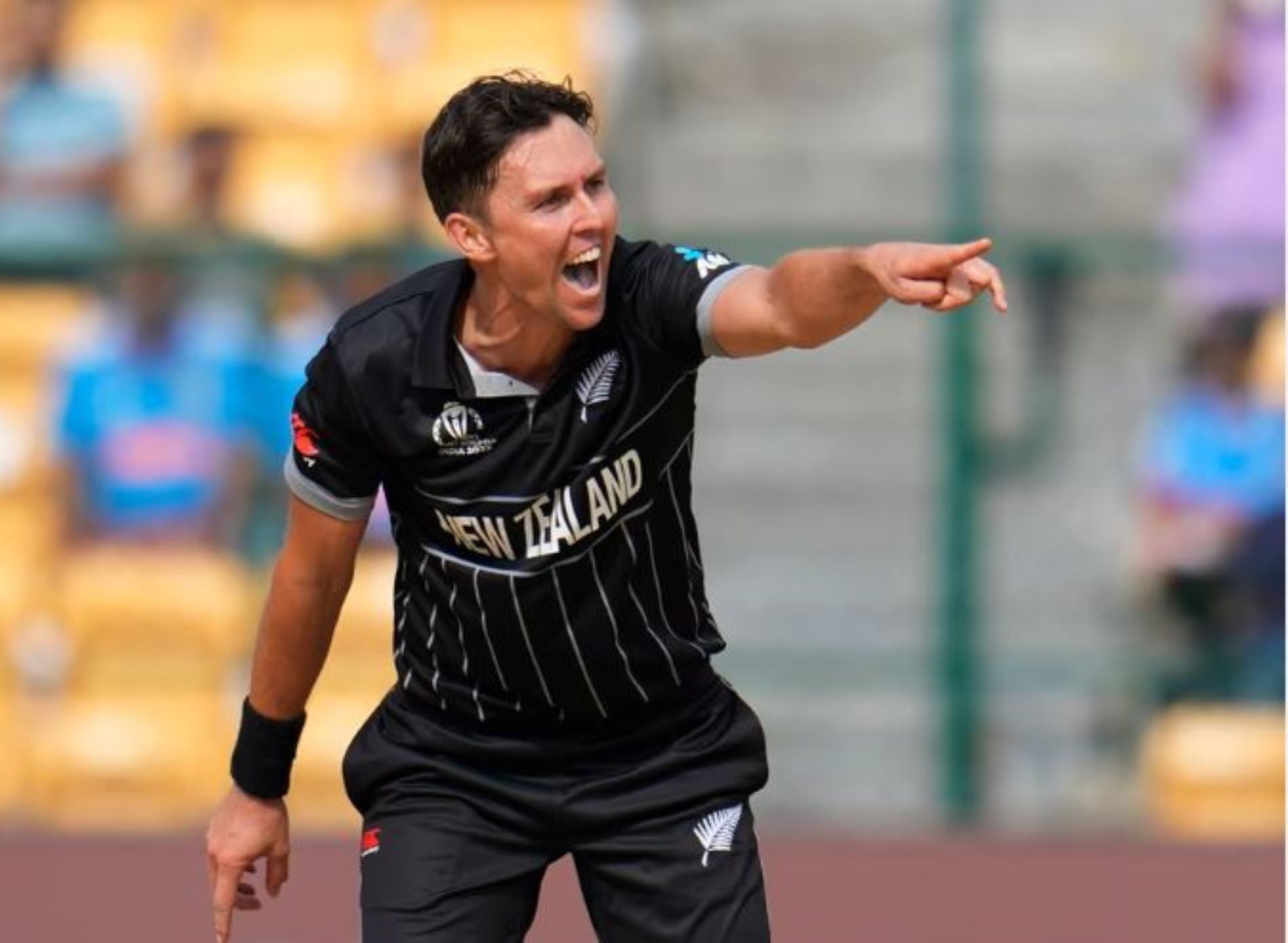
3 concerns that remain for New Zealand despite almost sealing their semi-final berth in 2023 World Cup
Another World Cup, another semi-final looks to be in the offering for the New Zealand cricket team. The Blackcaps have been the most consistent World Cup side in the last few years, qualifying to at least the semi-final in the previous four ODI and three T20I editions.
It looked like a fifth consecutive ODI World Cup semi-final was a mere formality when they began the 2023 edition with four wins in as many games. However, Kane Williamson's men endured a near-catastrophic slip-up by losing their next four to be on the brink of elimination.
Yet, they regrouped just in time to decimate the hapless Sri Lankans by five wickets in less than 24 overs to all but confirm their top-four finish. Their competitors for the fourth and final spot - Afghanistan and Pakistan will need a miracle of epic proportions to pip them on net run rate.
Therefore, it is safe to assume that a repeat of the 2019 World Cup semi-final between India and New Zealand will likely happen at the Wankhede Stadium in Mumbai on November 15.
Considering the heartbreak they suffered four years back in the grand finale against England, the Kiwis will want nothing less than to finish the job and win their first World Cup title.
Keeping that in mind, let us look at the three main concerns that remain for New Zealand despite their near-certain semi-final qualification.
#1 Concerns about their lower middle-order

Despite the red-hot form of the World Cup's leading run-scorer Rachin Ravindra, skipper Kane Williamson, and middle-order dasher Daryll Mitchell, the New Zealand batting leaves plenty to be desired.
The batters after Mitchell have either not batted long enough in critical situations or struggled for form. Among the lower middle-order batters, Tom Latham's returns remain the biggest worry for the Kiwis heading into a potential semi-final against India.
Following two half-centuries to start his World Cup campaign against the Netherlands and Afghanistan, the 31-year-old has struggled mightily, with only 34 runs in the next five games.
While he has been unbeaten towards the end of the New Zealand batting stint in the last two outings, Latham's average of 11.33 during the five-match period was a key reason behind their four-match losing streak.
It is also noteworthy that the southpaw has played massive roles in New Zealand's ODI wins over India historically, with an average of over 90 at a 113-strike rate.
With an overall average of over 51 against India in ODIs, the Blackcaps will need their wicketkeeper-batter to regain form for the semi-final against the same opponent.
Like Latham, Glenn Phillips, and Mark Chapman have been sporadic with their batting, with neither one playing any match-winning knocks of note. Chapman has faced only 66 balls in the tournament and has a batting average of only 20.50 in seven games.
Against a strong bowling lineup like India's, New Zealand's lower middle order concerns could rear their ugly head at the most inopportune moment.
#2 Inconsistencies of their frontline pacers

The loss of the in-form Matt Henry due to injury has accentuated concerns about the consistency of the New Zealand pace attack. While the pedigree of Trent Boult, Tim Southee, and Lockie Ferguson is unquestioned, their bowling has been inconsistent throughout the tournament.
While Boult returned to form with a 3/37 against Sri Lanka, he averaged in the high 30s until then in the World Cup with only 10 wickets in eight games. The left-arm pacer's form is crucial against the Indian skipper Rohit Sharma, whom he has dismissed four times in ODIs.
Boult's opening partner, Tim Southee, has looked woefully out of form since his return to the side to replace the injured Henry. In the three matches, the right-arm pacer has picked up only four wickets at a dismal average of almost 40 and a high economy rate of 6.78.
If New Zealand are to threaten India's intimidating and in-form top order, they will need their pace trio to be firing on all cylinders.
#3 The lack of a reliable fifth bowling option

To further complicate New Zealand's bowling inconsistencies, they have struggled to rely on 10 solid overs from the fifth bowler.
While Rachin Ravindra has been the find of the World Cup with the bat, his bowling hasn't lived up to the billing. The left-arm spinner has picked up only five wickets in the nine games at an average of 66.60 and an economy over 5.60 runs per over.
The other option, Jimmy Neesham, has fared even worse, with two scalps in three games at an average of 78.50 and a 10+ economy rate. It has relegated the Kiwis to often go to the part-time off-spin of Glenn Phillips.
While he has surprisingly impressed with six wickets at an average of 33.71, it will still be a massive gamble to use against the dominant Indian batting in the semi-final. The 10 overs from the fifth bowling option could prove very expensive and eventually costly to New Zealand's chances in the knockout stage.